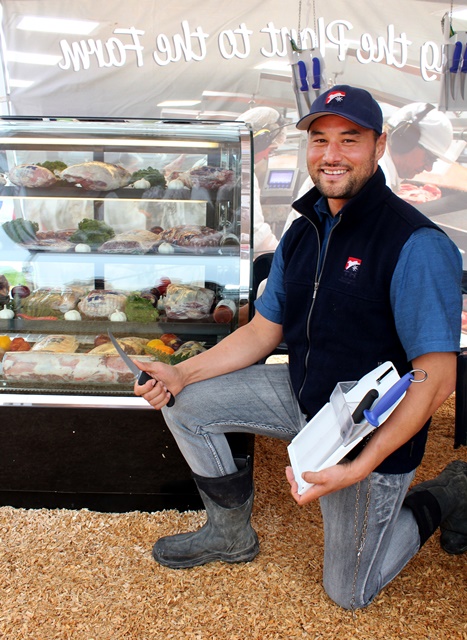Te Kuiti butcher teaches crowds to waste not
The Te Kuiti Meat Processors showed Fieldays punters how to get the most from a lamb carcass while still producing beautiful cuts of meat.
The Te Kuiti Meat Processors showed Fieldays punters how to get the most from a lamb carcass while still producing beautiful cuts of meat.
Butcher Garnett Rapana conducted the demonstration, showing how the different markets expect their meat to arrive and how it will come out on foreign shelves.

The topside, which is quite a lean cut, is sold in delis in America. Rapana said American customers will often have the meat minced in front of them in the store because of the concerns they have about the sources of their mince.
MC Alastair Bayliss said having a proper boning process is vital to the return they can get on a cut of meat.
“You can quickly devalue the product if you don’t cut it up right.”
Bayliss told viewers that taking your time is very important for safety when using electric saws to cut through the spine of a carcass.
Bayliss says the expectations from purchasers are that each cut will come out the same, so they know that if they buy a lamb rack that it will have eight ribs.
At maximum efficiency, Te Kuiti Meat Processors carve up to 2,150 carcasses a day at the plant with the wastage from each animal being minimal.
Up to 90% of their meat is boxed, while the remaining 10% is used as pet food.
The plant sends most of its produce to markets in the USA, China and UE.
The key to keeping their meat top quality for overseas customers through long journeys on sea freight is “keeping it clean and keeping it cold”.
Te Kuiti Meat Processors will be demonstrating each day between A and B street by the Fencing Competition area at Fieldays 2014.




